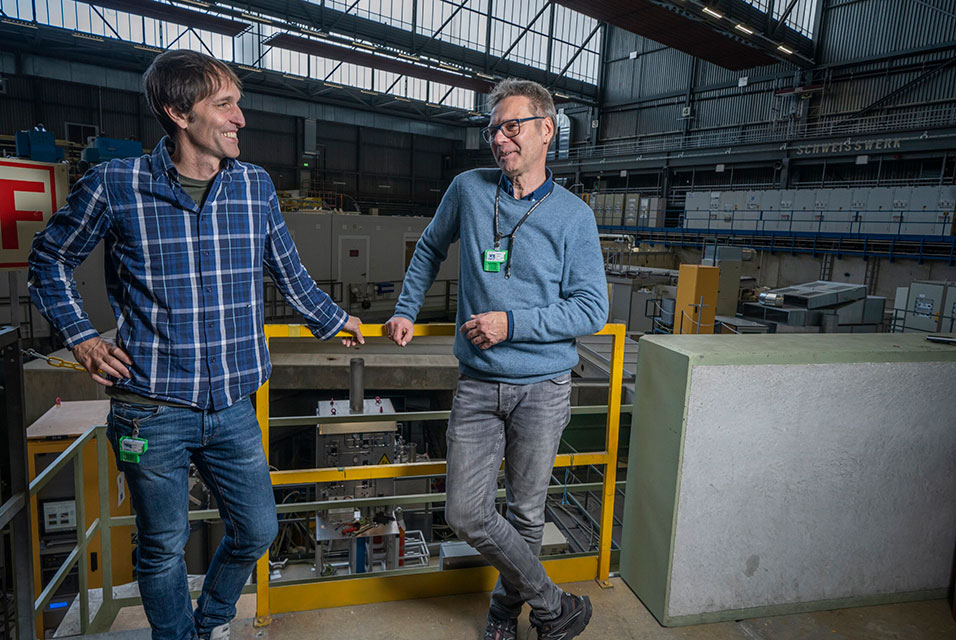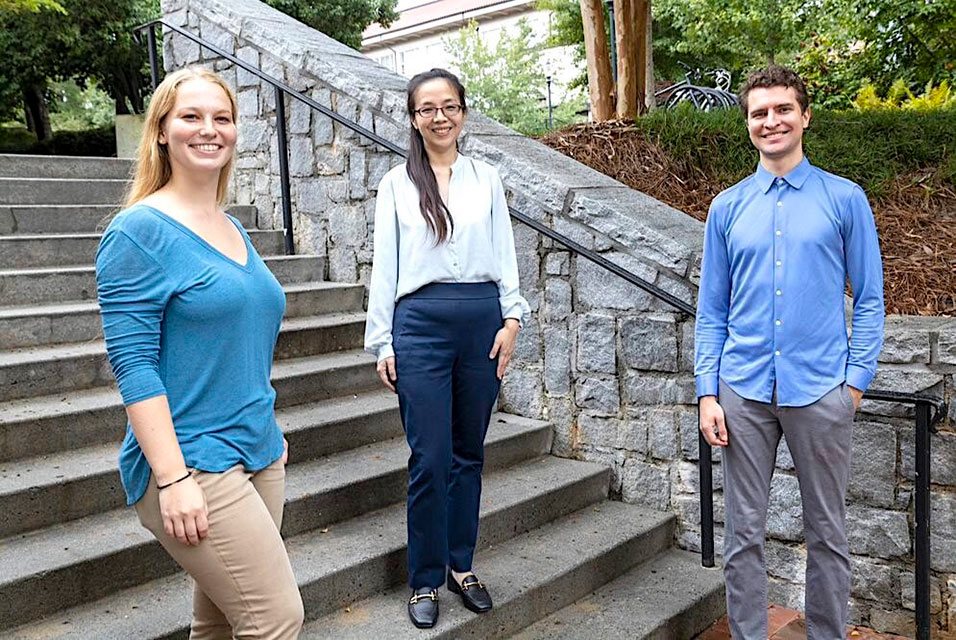VILLIGEN.- By studying an exotic atom called muonium, researchers are hoping misbehaving muons will spill the beans on the Standard Model of particle physics. To make muonium, they use the most intense continuous beam of low energy muons in the world at
Paul Scherrer Institute PSI. The research is published in Nature Communications.
The muon is often described as the electron's heavy cousin. A more appropriate description might be its rogue relation. Since its discovery triggered the words "who ordered that" (Isidor Isaac Rabi, Nobel laureate), the muon has been bamboozling scientists with its law-breaking antics.
The muon's most famous misdemeanor is to wobble slightly too much in a magnetic field: its anomalous magnetic moment hit the headlines with the 2021 muon g-2 experiment at Fermilab. The muon also notably caused trouble when it was used to measure the radius of the proton—giving rise to a wildly different value to previous measurements and what became known as the proton radius puzzle.
Yet rather than being chastised, the muon is cherished for its surprising behavior, which makes it a likely candidate to reveal new physics beyond the Standard Model.
Aiming to make sense of the muon's strange behavior, researchers from PSI and ETH Zurich turned to an exotic atom known as muonium. Formed from a positive muon orbited by an electron, muonium is similar to hydrogen but much simpler. Whereas hydrogen's proton is made up of quarks, muonium's positive muon has no substructure. And this means it provides a very clean model system from which to sort these problems out: for example, by obtaining extremely precise values of fundamental constants such as the mass of the muon.
"With muonium, because we can measure its properties so precisely, we can try to detect any deviation from the Standard Model. And if we see this, we can then infer which of the theories that go beyond the Standard Model are viable or not," explains Paolo Crivelli from ETH Zurich, who is leading the study supported by a European Research Council Consolidator grant in the frame of the Mu-MASS project.
Only one place in the world this is possible
A major challenge to making these measurements very precisely is having an intense beam of muonium particles so that statistical errors can be reduced. Making lots of muonium, which incidentally lasts for only two microseconds, is not simple. There is one place in the world where enough positive muons at low energy are available to create this: PSI's Swiss Muon Source.
"To make muonium efficiently, we need to use slow muons. When they're first produced they're going at a quarter of the speed of light. We then need to slow them down by a factor of a thousand without losing them. At PSI, we've perfected this art. We have the most intense continuous source of low energy muons in the world. So we're uniquely positioned to perform these measurements," says Thomas Prokscha, who heads the Low Energy Muons group at PSI.
At the Low Energy Muons beamline, slow muons pass through a thin foil target where they pick up electrons to form muonium. As they emerge, Crivelli's team are waiting to probe their properties using microwave and laser spectroscopy.
Tiny change in energy levels could hold the key
The property of muonium that the researchers are able to study in such detail is its energy levels. In the recent publication, the teams were able to measure for the first time a transition between certain very specific energy sublevels in muonium. Isolated from other so-called hyperfine levels, the transition can be modeled extremely cleanly. The ability to now measure it will facilitate other precision measurements: in particular, to obtain an improved value of an important quantity known as the Lamb shift.
The Lamb shift is a miniscule change in certain energy levels in hydrogen relative to where they "should" be as predicted by classical theory. The shift was explained with the advent of Quantum Electrodynamics (the quantum theory of how light and matter interact). Yet, as discussed, in hydrogen, protons—possessing substructure—complicate things. An ultra-precise Lamb shift measured in muonium could put the theory of Quantum Electrodynamics to the test.
There is more. The muon is nine times lighter than the proton. This means that effects relating to the nuclear mass, such as how a particle recoils after absorbing a photon of light, are enhanced. Indetectable in hydrogen, a route to these values at high precision in muonium could enable scientists to test certain theories that would explain the muon g-2 anomaly: for example, the existence of new particles such as scalar or vector gauge bosons.
Putting the muon on the scales
However exciting the potential of this may be, the team have a greater goal in their sights: weighing the muon. To do this, they will measure a different transition in muonium to a precision one thousand times greater than ever before.
An ultra-high precision value of the muon mass—the goal is 1 part per billion—will support ongoing efforts to reduce uncertainty even further for muon g-2. "The muon mass is a fundamental parameter that we cannot predict with theory, and so as experimental precision improves, we desperately need an improved value of the muon mass as an input for the calculations," explains Crivelli.
The measurement could also lead to a new value of the Rydberg constant—an important fundamental constant in atomic physics—that is independent of hydrogen spectroscopy. This could explain discrepancies between measurements that gave rise to the proton radius puzzle, and maybe even solve it once and for all.
Muonium spectroscopy poised to fly with IMPACT project
Given that the main limitation for such experiments is producing enough muonium to reduce statistical errors, the outlook for this research at PSI looks bright.
"With the high intensity muon beams planned for the IMPACT project we could potentially go a factor of one hundred higher in precision, and this would be getting very interesting for the Standard Model," says Prokscha.










